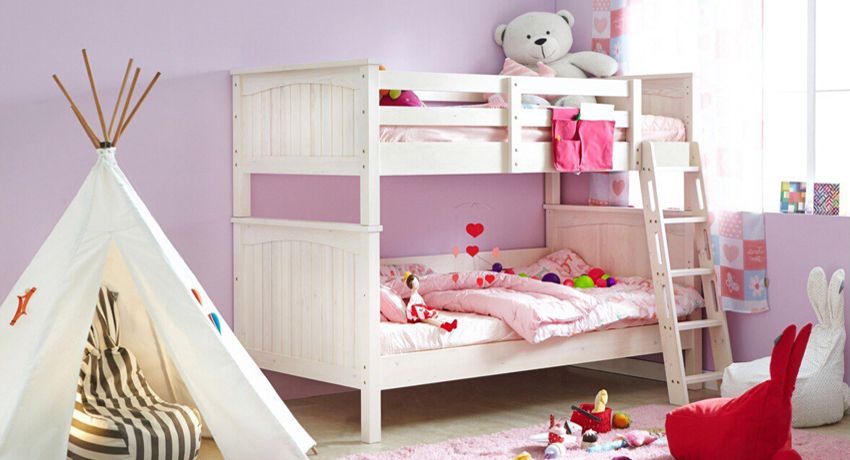The range of infrared heaters is wide and varied. They can be used both in the enclosed space, and on the open areas. The article will highlight in detail the choice of infrared heaters, as well as their scope, characteristics and other nuances. Before you buy the equipment, you should analyze the infrared heaters: the pros and cons, the prices of models. The study of the basic parameters will help to choose the optimal model.
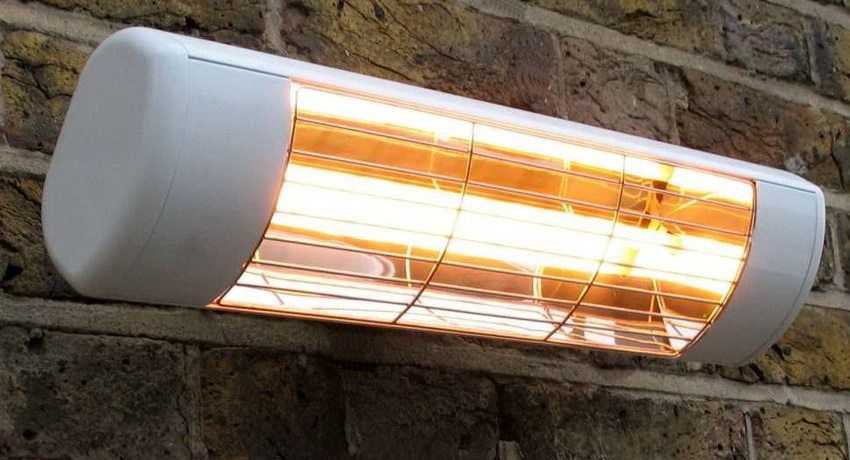
The use of infrared heaters for space heating
Infrared room heaters are relatively new equipment used as primary and secondary heating. Their popularity contributes to a set of advantages, chief among which is efficiency and ease of use. Installation and operation of these devices does not require the involvement of qualified personnel. Also, they do not need periodic repair and have a long service life.
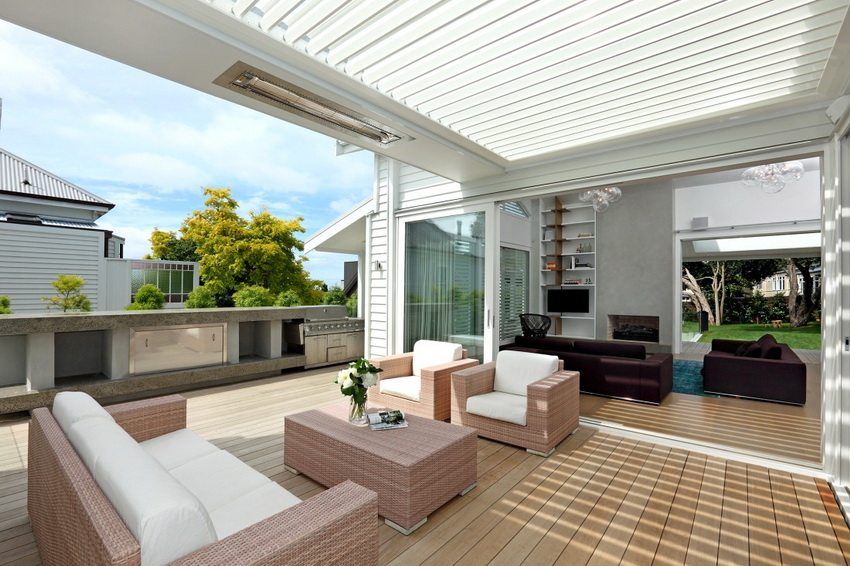
The basis of infrared heat transfer is the heating of nearby surfaces and objects. Due to this, all the energy expended on heating is converted into heat without loss, which cannot be said about devices that heat the air in the surrounding air. Using such heaters, you can not worry that this will lead to an uneven distribution of warm air in the room and changes in humidity levels.
The ability of such devices to perform spot heating is widely used in manufacturing plants with impressive floor space. By using infrared heaters for heating the shop, it is possible to achieve an increase in energy savings of 45%. So, it is possible to use local heating of workplaces located at a considerable distance from each other, without resorting to heating the entire room.
Using infrared heaters in the home, you can create zones in the house with different temperatures. Many types of heaters have an interesting design and can be used as a decor. Equipped with remote controls make their regulation as comfortable as possible. The functions of the Polaris PKSH 0408RC floor-standing infrared electric heater include the rotation of the device, which is very convenient. The heater is designed for heating a room at 20 m ?, does not burn oxygen, has a built-in timer.
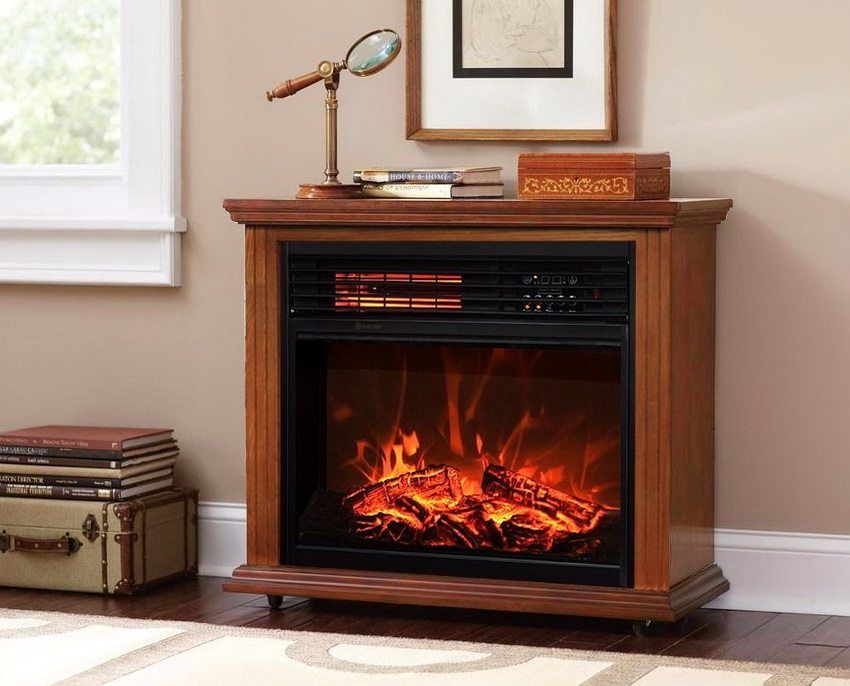
Helpful advice! Models of film wall-mounted infrared heaters can be used as a decorative panel to complement the interior.
Recently, many motorists use infrared heaters to heat the garage. Installing the device over the hood, even in extreme cold it will be easy to start the car. For installation in the garage, wall-mounted Peony infrared heaters are popular. You will be warm during the self-maintenance of cars in the autumn-winter period.
Taking into account the rapid growth in energy prices and the limitation of their use, the use of infrared heat sources for industrial and agricultural complexes is almost the only alternative to heating, especially when it comes to high and overall workshops, boxes, greenhouses, garages and halls. The operation of heaters is not accompanied by noise or vibration and does not adversely affect the condition of people in the workplace.
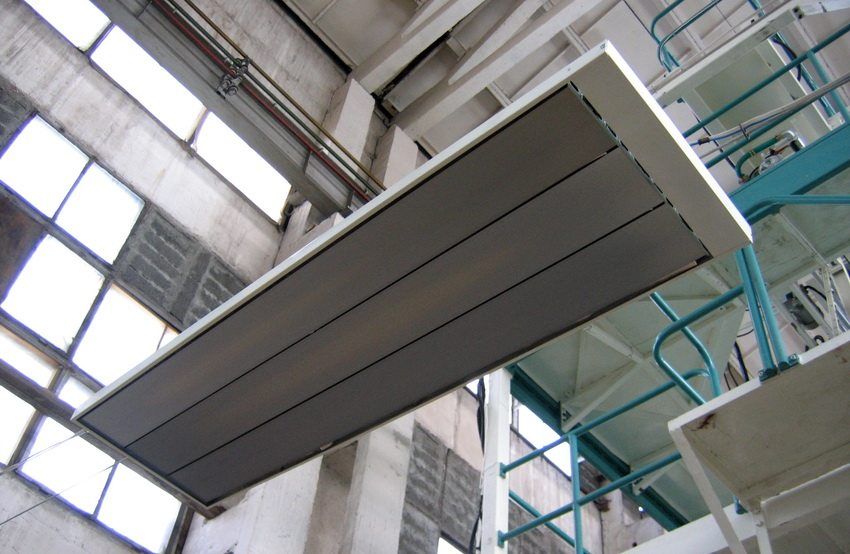
It should be noted that infrared heaters have a high warm-up rate, unlike traditional heating equipment. Heating occurs immediately after the heaters are turned on. This feature allows you to turn off or reduce the intensity of the operation of devices at night or lunchtime in the production, which also contributes to their energy efficiency.
Operating locally, the heaters create the feeling that the temperature in the room is several degrees higher than in reality. Given this fact, you can set the temperature lower, but at which a person will feel comfortable. This will contribute to even greater energy savings, as a decrease in temperature by 1 ° reduces electricity consumption by 5-6%.
Using infrared heaters for industrial heating, the management of enterprises reduces the cost of building boiler houses and additional ventilation systems. Indeed, in the device of heaters there are no moving elements, they do not contribute to the accumulation and circulation of dust or other air pollutants. Wall and ceiling mounting methods can significantly save usable floor space.
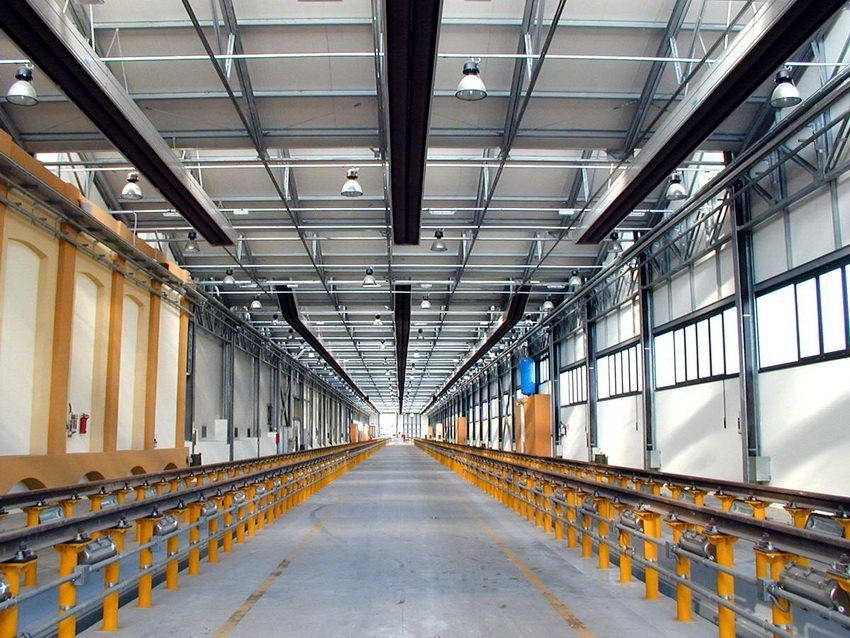
The IKOLINE heaters of the TST company have proven themselves well. The IKO 20M model is one of the most powerful heaters that can be installed on the ceiling with a height of more than 3.5 m, the heating area as the main source is 30 m ?. The IKO 30 heater is ideal when used in high rooms with minimal power, the model is optimal in terms of price and quality.
Due to its high power and economy, the use of infrared gas heaters for industrial premises is very popular. Such equipment is equipped with gas pressure monitoring devices, for launching some models do not require connection to the electrical network. The Patriot Power GT 7IN heater is silent in operation, easy to operate and can be used as the main source of heat in large buildings where there is no centralized heating.
For open public places (playgrounds, cafes, terraces) suitable space heating outdoor electric infrared heaters. These devices are practical, economical and able to heat an area in a radius of up to 3-4 m. Can a heater for Heliosa 999 with a capacity of 1.5 kW heat up to 15 m? open space. The device is designed for wall mounting and has a reversal of the shoulder-holders 0.5 m.

The main advantage of infrared heaters for greenhouses and other agricultural facilities is that heat is sent from the bottom up, directly heating the soil and plants. Analysis of the use of such equipment in greenhouses has become evidence of the increased germination of sprouts by 35%, due to the effect of heat on the soil. Many use for heating greenhouses made of polycarbonate infrared heater film type, laid under the ground.
The use of infrared heaters for heating greenhouses is characterized by a number of advantages:
- reduction of heating costs due to low power consumption;
- radiation safety for plants and greenhouse personnel;
- there is no need for special wetting of the greenhouse, since the humidity level during the operation of IR heaters does not change;
- quiet operation, which is important for people working in greenhouses;
- high heating rate;
- the ability to create in one complex zones with different temperature conditions, as required by different types of crops;
- availability and ease of installation allows you to install heaters without the involvement of qualified professionals, saving on installation services and arrangement of expensive heating systems;
- high fire safety;
- savings in storage space due to wall and ceiling mounting.
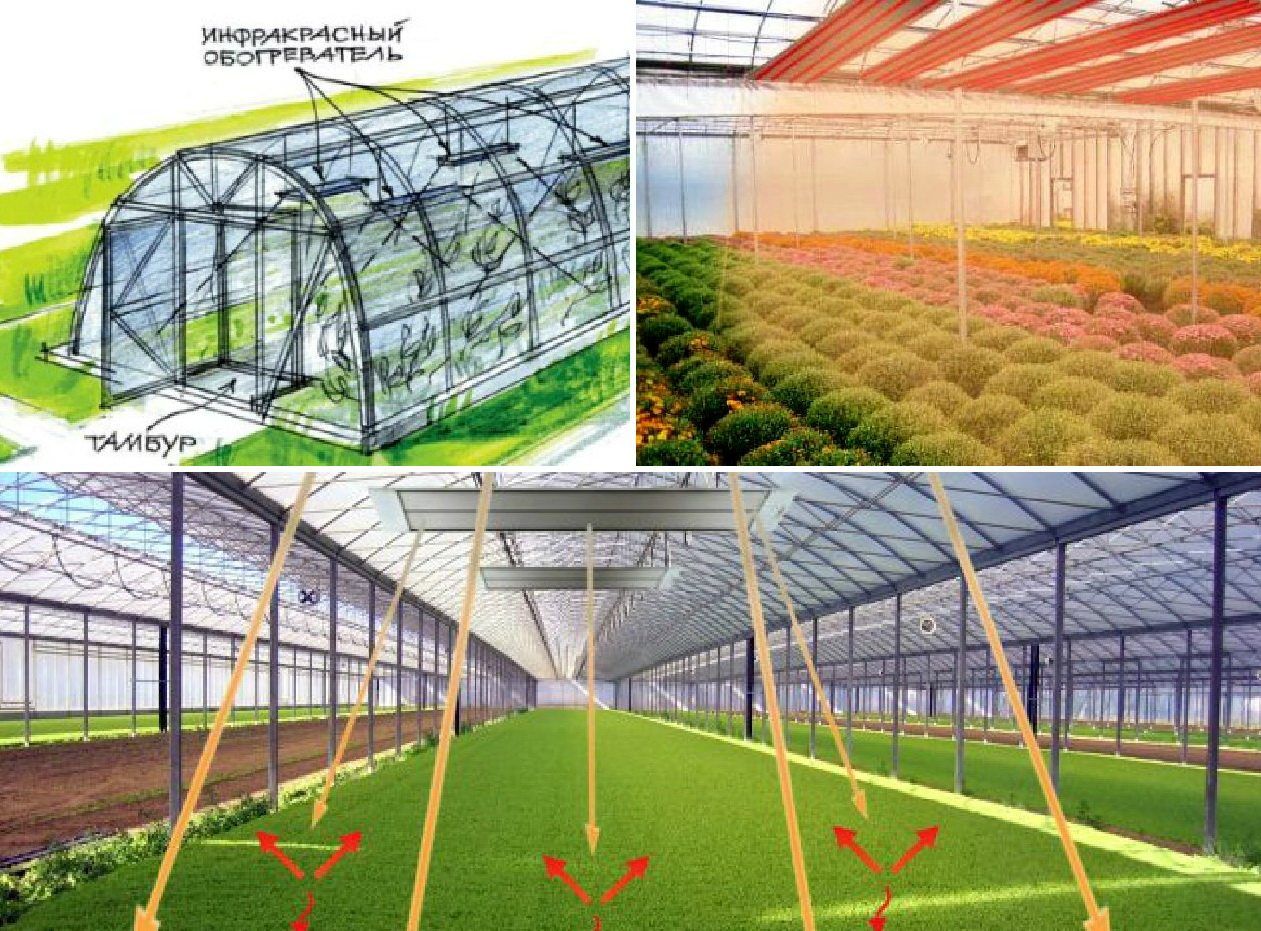
Helpful advice! Choosing which heaters are better than convectors or infrared, it is worth considering that the latter consume less electricity by 45-65%.
Using infrared heaters for polycarbonate greenhouses for heating, it is possible to create inside conditions that are most suitable to natural ones, since such heating is akin to solar radiation. In winter, it is recommended to direct the radiation to the greenhouse walls, which will contribute to the temperature acceptable for plants in this particular zone.
There are several ways to heat a chicken coop: gas, stove and electric. The acquisition of a gas boiler will be repaid only for large farm poultry houses. Furnace heating involves the presence of fuel (wood, coal) and constant monitoring. An acceptable option is heating with electric heaters, but remember that this is a rather expensive type of heating equipment.
Choosing which heaters are better than convector or infrared for the house, it is necessary to take into account the energy efficiency of the devices. Infrared heat sources contribute to the conversion of electricity into heat almost without loss. In addition, the heat from the infrared radiation will be accumulated directly in the area where the birds are located, and not rise to the ceiling, as when using a convector.

The safety of using infrared heaters in the house also plays a significant role: due to the fact that the devices are attached to the ceiling, the risk of equipment contact with birds is excluded. For small private chicken coops, the Bilux B800 AIR heater of the Russian production is quite suitable. Does the 0.7 kW appliance have enough power for heating 8-14 m? with power consumption of 0.2 kW.
When installing an infrared heater in a chicken coop, it is necessary to equip it with a thermostat. Thanks to this device, it will be possible to set the heating temperature required for keeping birds in winter. Once you set the temperature level, you will not have to worry about the microclimate: as soon as the temperature falls below the set level, the heater will turn on automatically.
Comparing infrared and convector heaters, it should be noted the main advantages and disadvantages of each type. The advantage of convectors is the heating of the entire room, but this principle can also be attributed to the lack of such a heater. After all, there is always the risk of losing warm flows through the tightly closed doors and windows and, as a result, the room will not be heated enough.

In this sense, convector heaters are suitable for heating a small, as-air-tight room as possible. After switching on the device, the room warms up quickly, and due to the low temperature of the surface of the device, oxygen from the air is not burned. In addition, a random touch to the device is safe for humans, which allows its use in children’s rooms.
In contrast to convector, infrared heating acts locally, spending energy only on heating a specific place. Due to this, all consumed energy will be converted into heat, which contributes to the rational use of energy. This feature is successfully used by enterprises with large areas, when it is necessary to create comfortable working areas. Dot heat is directed only to a specific place without heating the entire room, which is economically justified.
Another advantage of infrared models over convector is the localization of heat in the required place. The radiant energy of IR devices acts directly on the necessary zone, while using convectors there is a possibility of accumulation of warm air masses under the ceiling. The space in which the person is located remains warm up a little.
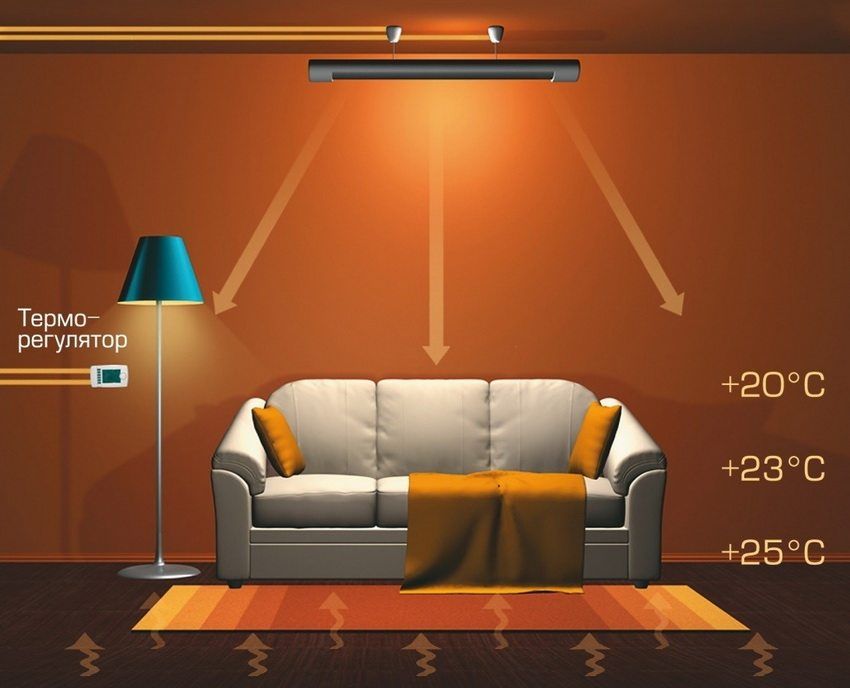
Comparing these two types of heaters, I would like to note the small weight and compact dimensions of the ceiling-wall household electric infrared heaters, their simple and affordable installation for each. Thanks to modern design in various colors, the devices harmoniously fit into any interior, without taking up extra space and remaining almost imperceptible.
To find out which infrared heaters to choose for a production workshop or household use, it is necessary to consider the device’s power, installation method (wall or ceiling), room height and heating area of a single device. The higher the power rating of the heater, the larger the area it can supply with heat. This parameter is indicated in the accompanying documentation for the instrument.
Another important parameter in the calculation of the heated area is the height of the installation of an infrared heater. More powerful heaters are set higher, since over-heating will be observed with low installation. If the area of the room is large, and the ceilings are low, it is better to purchase several low-power models. The table below shows how much infrared heaters heat depending on the method and installation height.
| Device mounting height, m | Wall heater | Ceiling heater |
| Heated area of the device, m? | ||
| 2.5 | eight | 17 |
| 3 | 20 | 24 |
| 3.5 | 40 | 32 |
Helpful advice! To determine the power of the device for heating, you can use a simplified calculation recommended by experts. It consists in the fact that the heating area of 10 m? 1 kW of heater power is enough.
In the technical documentation for ceiling infrared heat sources, manufacturers indicate the minimum height at which the device can be of a particular power. Thus, heaters with a capacity of 1.2 kW can be installed at a height not lower than 2.4 m, instruments with a capacity of 2.4 kW can be mounted at least 3 m, for more powerful devices of 5.7 kW, the suspension height is from 6.5 m.
The best infrared heaters ceiling mount, given their relevance in the market of heating products, are considered models of Peony and Almak Russian production.
The line of infrared heaters Almak includes models with a capacity of 5, 8, 10, 13, 15 kW, designed for heating respectively 5, 8, 11, 13, 16 m? square It should be noted that Almak heaters have an interesting modern design, their thickness is only 3 cm. Devices are produced in several colors: white, beige, gold, silver, wenge.

Almak heaters can be used to heat office and industrial premises, they fit perfectly into any interior of an apartment or house. Thanks to convenient fasteners that can move along the body, the device can be quickly and accurately installed without additional assistance. In product catalogs, you can choose a device of suitable capacity, depending on the area of the room.
Almak heaters can be equipped with a thermostat that will maintain the desired temperature in the room. The most powerful heater IK-16 can be used as the main heating in the winter period, if the area of the room does not exceed 16 m ?. In rooms up to 32 m? such a device can serve as an additional source of heat.
Helpful advice! When buying Almak heaters, please note that the thermostat and electrical connection cable are not included in the factory package.
The table shows the estimated power for objects with different operating modes when using the Almak IK-16 model.
| Type of room | Approximate power per 1 m? square, W |
| Private well-insulated house | 70 |
| The country house warmed | 100 |
| Housekeeping without insulation | 120 |
| Loggia, balcony without insulation | 120 |
| Greenhouse with polycarbonate walls (8 mm) without insulation | 130-150 |
| Barn, winter chicken coop with poor insulation, where the above zero temperature is not higher than 10-12 degrees | 100 |
Before buying each consumer wants to know which infrared heater is better? In order to choose the right model, one should not only be guided by its design, but also analyze the functionality of infrared heaters: pros and cons, prices for appliances, main characteristics, customer reviews. This will be the key to the correct operation of devices purchased for any task.
The advantages of infrared heat sources include high efficiency and practicality of devices, quiet operation, fire safety, durability. The main advantage of IR heaters when used in industrial premises is the elimination of the danger of defrosting the system, as in water heating, and the absence of the need to set up expensive boiler rooms and additional ventilation systems. Ceiling and wall mounting saves considerable space.
Often heat guns are used to heat large storage facilities. Analyzing what better heat gun or infrared heater, you should give preference to the latter. Due to the fact that there are no moving elements, filters and lubricants in the device, the infrared heater works silently, does not pick up dust and does not fail. Judging by the reviews of those who used heat guns, you need to be prepared for the fact that after it is turned off, the room instantly cools down, and long-term operation is associated with high power consumption.
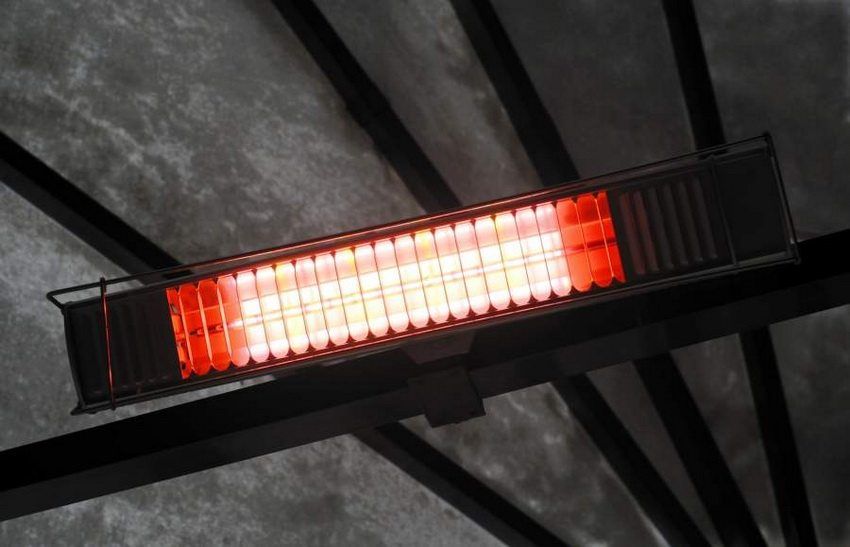
You can find a lot of positive reviews in favor of infrared heaters in comparison with oil. Buyers note that when working with IR devices, the humidity in the room does not change, while the oil does feel a peculiar smell and heat them only in the 40-50 cm zone. Which oil or infrared heater is better for you, decide based on the technical specifications and user reviews.
The disadvantages of infrared sources include some discomfort at the close location of heaters, the difficulty of repair in the event of a breakdown and the high cost of some ceramic models. When choosing which infrared or ceramic heater is better, keep in mind that the latter can work in rooms with high humidity. An overview of the pros and cons of infrared heaters will help you choose the optimal model of the device.
It is most convenient to get acquainted with the models of devices, order and purchase sources of infrared radiation in online stores and on the websites of manufacturing companies. In the product catalogs you can find the best models of infrared heaters. Heaters presented on the sites are accompanied by a description of the technical parameters, recommendations for their use and price indications for the devices.
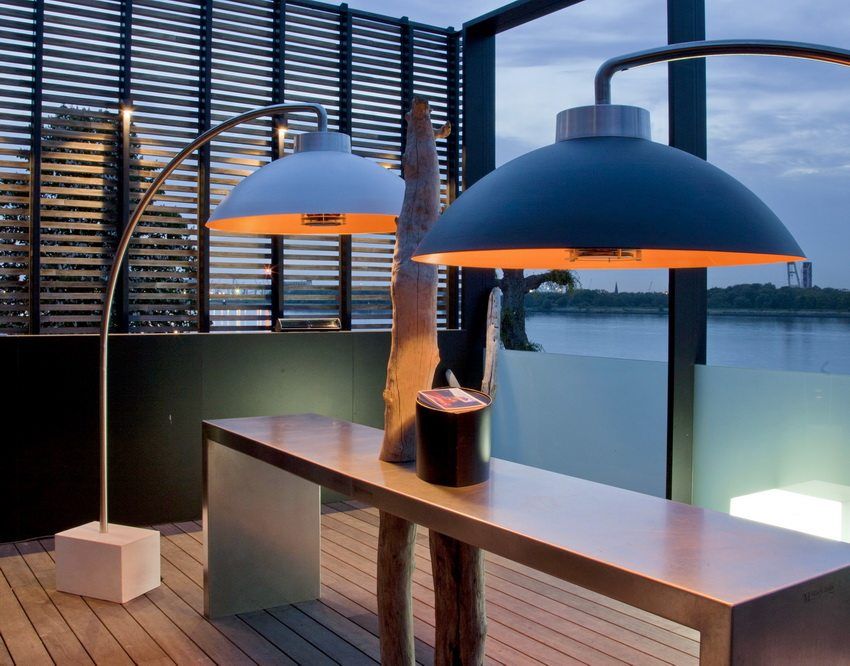
Referring to the managers of companies selling IR heaters, you can get expert advice on the choice of device power, installation method, as well as the possibility of using one or another model of infrared heater for a wet room or for heating an open area. Many manufacturers post informational or training videos describing the main characteristics of devices and examples of their installation.
Helpful advice! Deciding to purchase an infrared heater, give preference to proven manufacturers.
Here you can buy industrial infrared heaters. Competent experts will help to calculate the number and power of devices required for a particular room, taking into account its height and area. Approximate prices for popular models of household and industrial infrared heaters of different brands are given in the table.
| Manufacturer, model | Description | price, rub. |
| Almak. IR-11 | Ceiling unit with a capacity of 1000 W is presented in an elegant design with rounded edges, able to heat a room up to 20 m ?. Suitable for heating an office, apartment, summer house, as well as for industrial premises. | 3480 |
| Neoclima, NC-IRHLS-2.0 | Excellent model of floor infrared heater for the home with the possibility of mounting on the wall. Power 2000 watts. Equipped with a thermostat, overheat protection, telescopic stand. Heating area – 20 m ?. | 2450 |
| Polaris, PCSH 0408RC | The device has an elegant swivel case, is equipped with electronic control (touch panel / remote control), protection against overturning and overheating, a thermostat. Supports two heating modes. Power 800 watts. | 3350 |
| Timberk, TIR HP 1 1800 | The wall model from the leading manufacturer is equipped with a timer, protection against overheating. | 4790 |
| Ballu, BIH-AP-0.8 | The economic device calculated on heating to 8 m?, Power is 800 W. Laconic design, it is possible to connect the thermostat. | 2490 |
| Peony, ceramics 06 | Ceiling heater is lightweight, power 600 watts. Ideal for small rooms: bathrooms, hallways, walk-in closets. Equipped with a backlit switch. | 4090 |
| Noirot, Royat 2 1800 | Model with a power of 1800 W, has a moisture-proof case, effectively heats up to 18 m? square Supports three heating modes. It can be used on the open areas. | 7100 |
| Zilon IR-0.8. S | 800W small ceiling heater. The area of heating is up to 8 m ?. Overheating protection. Can be mounted on the wall. Suitable as additional heating in the apartment. | 1950 |
| Mister Heat, Thermal C-0.1 | Model with a capacity of 100 watts, is designed for local heating of 1 m? square It can be installed on the inner surface of the desktop. Equipped with thermostat and overheating protection. | 1350 |
The market of the climatic equipment offers a wide choice of modern infrared heaters. By choosing a model that matches your room and its mode of operation, you will provide warmth and comfort during the cold season.

